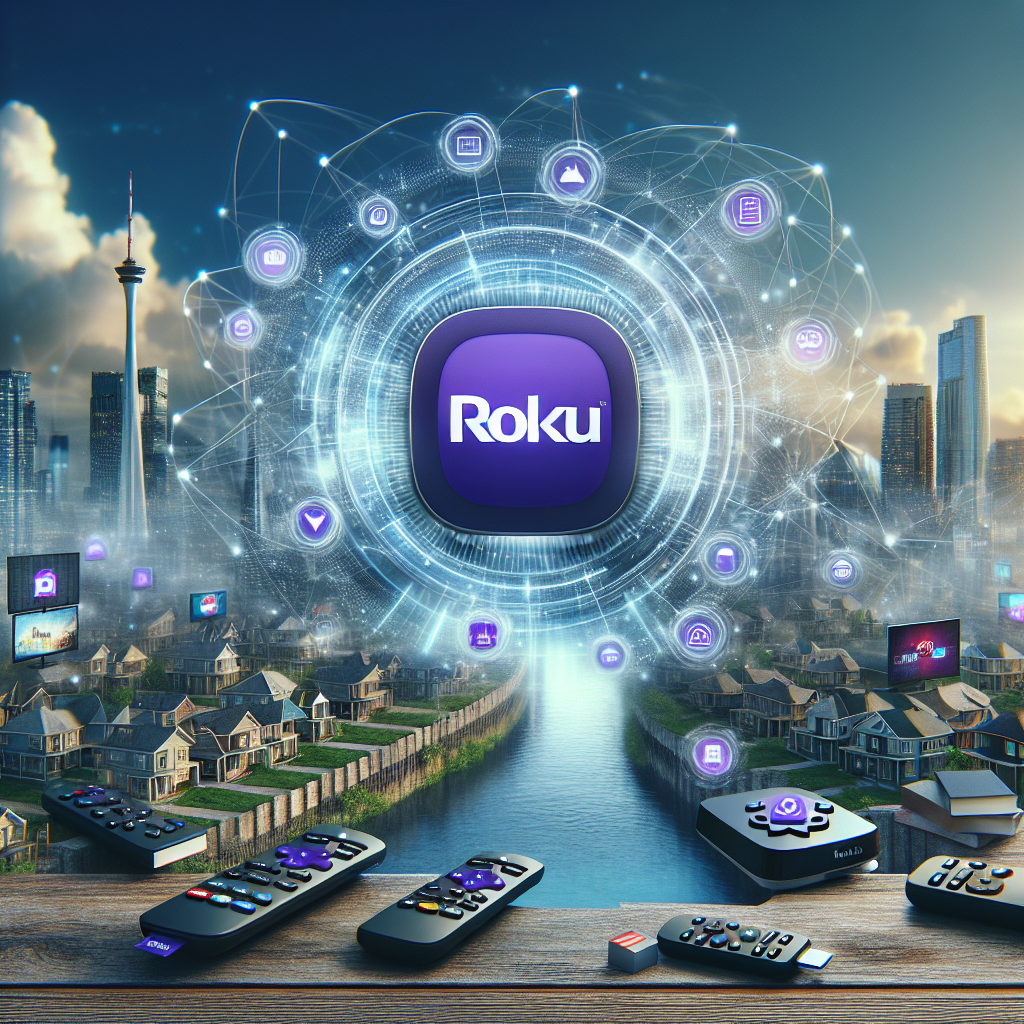TOP Articles Roku APP Publisher Connected TV Apps Monetization -pixalate.com -appsflyer
In a rapidly evolving digital landscape, the introduction of Smart TV SDKs by Brightcove marks a significant leap forward for media companies looking to enhance their reach and engagement. These software development kits (SDKs) are specifically tailored for premium over-the-top (OTT) and direct-to-consumer (DTC) streaming video experiences, targeting platforms like Roku, Samsung, and LG Smart TVs. This move is not just about expanding technological capabilities; it’s about empowering media companies to deliver high-quality, consistent, and engaging viewer experiences across some of the most popular smart TV platforms available today.
The new SDKs introduced by Brightcove are designed to streamline the app development process, significantly reducing both the cost and time required to bring high-quality applications to market. This is a game-changer for media companies that have traditionally faced high barriers to entry in the smart TV app space. By offering out-of-the-box functionality, these SDKs make it more affordable and accessible for media companies to develop and manage native apps, thereby democratizing access to premium app experiences. The inclusion of advanced features such as content protection, monetization, and analytics reporting further enhances the value proposition of these SDKs.
One of the standout features of Brightcove’s new SDKs is their robust support for advertising needs. The SDKs offer both client-side and server-side ad insertion capabilities, ensuring that media companies can effectively monetize their content. The Roku SDK, in particular, is compliant with the Roku Advertising Framework, which sets a high standard for ad integration and performance. This focus on advertising is crucial, given the increasing importance of ad revenue in the media industry. By providing detailed insights into ad breaks, player performance, content performance trends, and streaming quality issues, these SDKs enable media companies to optimize their monetization strategies and improve viewer satisfaction.
Security is another critical area where Brightcove’s SDKs excel. They offer multi-format DRM support and playback rights restrictions, ensuring that content is protected from unauthorized access and piracy. This is particularly important for premium content providers who need to safeguard their intellectual property. The SDKs also automatically collect and report session details that impact viewer satisfaction, providing valuable data that can inform content, monetization, and distribution strategies. This level of insight is invaluable for media companies looking to refine their offerings and maximize their return on investment.
Brightcove’s commitment to innovation is evident in their partnerships with top video app developers, which provide media companies with a range of options to reach their audiences on any device. These SDKs add to Brightcove’s existing player platforms, including web, Android, iOS, and TVOS, creating a comprehensive ecosystem that supports a wide variety of viewing experiences. This holistic approach ensures that media companies can deliver reliable and engaging streaming experiences across multiple platforms, further enhancing their ability to attract and retain viewers.
Roku’s recent third-quarter results underscore the growing importance of smart TV platforms in the media landscape. The company reported a 20% increase in revenue, driven by strong performance in content distribution, video advertising, and sales of Roku-branded smart TVs. With a total net revenue of $912 million, Roku’s success highlights the significant opportunities available in the smart TV market. The launch of Roku-branded smart TVs and smart home products contributed to a 33% year-over-year growth in device revenue, outpacing the industry and solidifying Roku OS as the top-selling TV operating system in the US.
Despite challenges in the US ad market, Roku’s platform revenue grew by 18%, thanks to a solid rebound in video ads and strategic partnerships with advertisers like Walmart and Spotify. These partnerships have enabled Roku to introduce innovative ad formats, such as shoppable ads, which enhance the user experience and drive engagement. The company’s ability to adapt to changing market conditions and diversify its advertiser demand sources has been key to its continued growth. With more than 30 programmatic partners, Roku is well-positioned to capitalize on the growing demand for digital advertising and content distribution.
The rise of connected TV (CTV) is transforming the media landscape, offering new opportunities for audience engagement and monetization. As viewers increasingly consume content on smart TVs, platforms like YouTube are focusing on enhancing the CTV experience. Google’s YouTube has become the most-watched platform on TV, surpassing competitors like Netflix. With ad revenue of $9.2 billion, YouTube is leveraging AI to inform ad breaks and improve the viewing experience. New ad formats, such as pause ads and 30-second non-skippable ads, have been introduced to fit the living room ad experience, showing positive results in terms of engagement and ROI for advertisers.
Publishers are also exploring the potential of CTV to optimize revenue and engage niche audiences. The MX3 Barcelona event highlighted how AI and technology innovation are driving revenue strategies in the media industry. As third-party cookie deprecation impacts publisher revenues, CTV offers a valuable opportunity to tap into the growing demand for versatile digital content. However, navigating the complexities of the CTV market, such as disconnected data and brand safety concerns, can be challenging. Securely sharing and using video-level data is essential for increasing efficiency and making CTV advertising safer.
By expanding their CTV offerings, publishers can unlock new revenue streams and enhance audience engagement. Iris.tv’s video data platform is one solution that provides a neutral and privacy-friendly way for publishers to improve their CTV strategies. Decision-makers at events like Revenue Europe and Revenue North America are emphasizing the importance of data-driven insights to maximize audience engagement. Investing in a robust data management strategy is crucial for publishers to stay competitive in the digital landscape. This approach not only improves efficiency but also ensures that publishers can deliver personalized and engaging content to their audiences.
Google’s role in the media industry cannot be overlooked, especially when it comes to AI and machine learning. The use of AI to inform ad break length and frequency on YouTube is just one example of how technology is shaping the future of media. As publishers and media companies continue to explore the potential of AI, it’s important to differentiate between rights and risks. While AI offers numerous benefits, such as improved efficiency and personalized content, it also raises ethical and privacy concerns. Balancing these factors will be key to the successful integration of AI in the media industry.
In conclusion, the introduction of Brightcove’s Smart TV SDKs, the strong performance of Roku, and the rise of connected TV platforms like YouTube highlight the transformative potential of smart TV technology. For media companies and publishers, these developments offer new opportunities to reach audiences, optimize revenue, and enhance viewer engagement. However, navigating the complexities of the smart TV market requires a strategic approach, focusing on innovation, security, and data-driven insights. By leveraging the latest technologies and best practices, media companies can stay ahead of the curve and thrive in the ever-evolving digital landscape.







